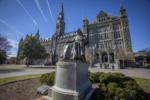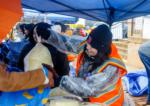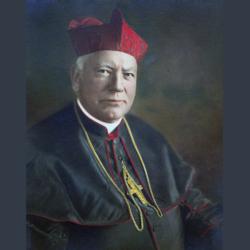Underground Railroad
The window is closed, yet the roar of the New Jersey Turnpike just beyond the trees disturbs the stillness inside this old house, built in the woods of New Jersey around 1845 before automobiles or turnpikes could be imagined.
I'm visiting the Peter Mott house, one of the few existing structures which can be traced back to the Underground Railroad, that series of pathways, secret hideaways, and "conductors," which helped enslaved people escape north to freedom. Peter Mott was a free Black farmer and property owner who sheltered people on their journey.
But the old house is also a tribute to the power of community.
I live nearby, but this was my first visit to the Mott House in Lawnside, home to free Black people since the 1700s and believed to be the first self-governing African American town in the North.
My interest was piqued by a fascinating new book, "On Freedom Road," by David Goodrich, who rode a bicycle 3,000 miles traveling the routes of the Underground Railroad and introducing the people who defied a cruel system and pernicious bounty hunters.
"On Freedom Road" begins with Goodrich's journey from his home in Maryland (birthplace of the most famous conductor, Harriet Tubman) through Philadelphia, across the Ben Franklin Bridge and on to the Mott House.
My guide, Linda Shockley, welcomed me on a rainy Sunday with a wealth of information.
The structure was nearly collapsing when the town's Black community, many of them descendants of city founders, decided it must be saved.
The house had been added on to in 1870, and was continually occupied until the 1970s. But it was structurally uninhabitable by the early 1990s when a developer bought it and surrounding land to build a series of duplexes. The Mott house was targeted for destruction.
A local man named Clarence Still and many others shared an oral history, later confirmed by research, about the house. The community rallied support and the house was spared. In 2001, after an 11-year restoration project, the Peter Mott House and Underground Railroad Museum was dedicated and is now on the National Register of Historic Places.
Clarence Still is related to William Still, a famous Philadelphia free Black man who, in the mid-19th century, documented his significant role in the Underground Railroad's work.
No one knows if Harriet Tubman ever visited the Mott House, but in that house are old, frayed parlor chairs and a settee from William Still's office in Philadelphia, and we believe Harriet Tubman had been to that office.
"So," I said enthusiastically to my guide, "Harriet Tubman probably sat on that chair!"
Linda smiled skeptically at my imagination. Well, maybe.
To learn more about Tubman, William Still and the Underground Railroad, watch the 2019 movie "Harriet," streaming on Netflix. It's based on the true story of Tubman's escape from slavery and her subsequent commitment to bringing others to freedom. It's a riveting movie.
Although many Americans were abolitionists, particularly the Quakers, or Friends, it's scandalous to us now to admit that many Christian churches were complicit in profiteering from slavery, the Catholic Church being no exception.
Georgetown University is just one example. This Catholic institution owned enslaved people, sold them to the brutal cotton fields of the deep South, and used Jesuit plantations to finance its operations.
But the Peter Mott House gives us hope. It's a testimony to the resilience and community of Black Americans, and to those who helped them. It helps us understand the long-term effects of this institution on our country's history and the debt owed.
All our children need to learn this history. And so do we.
- Effie Caldarola is a columnist with the Catholic News Service.



















